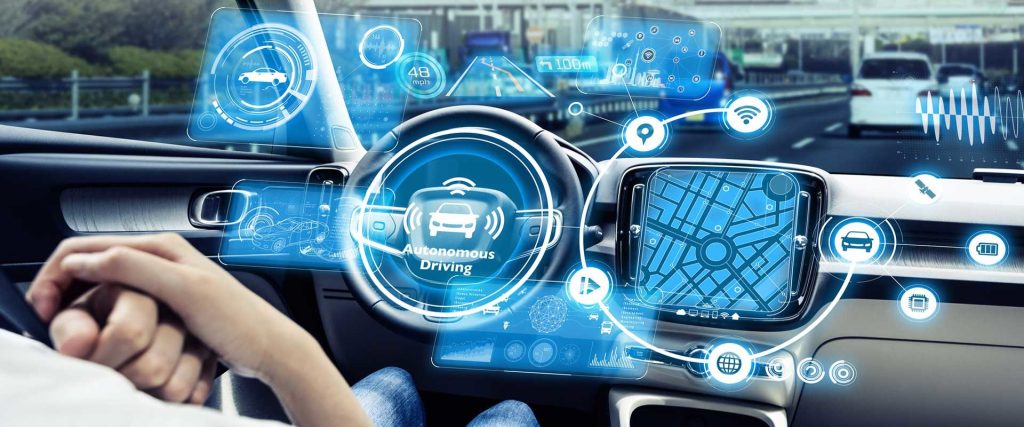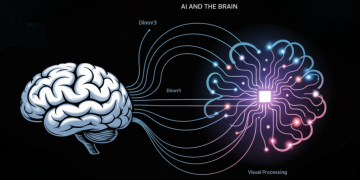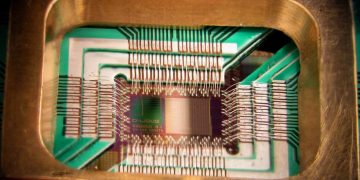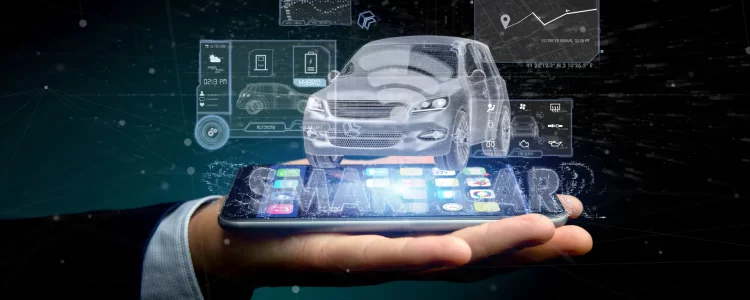Introduction: The Ongoing Development of Autonomous Driving Technologies
Autonomous vehicles (AVs) have moved from the realm of science fiction to real-world prototypes and pilot programs at an unprecedented pace. The dream of self-driving cars that can navigate urban streets, highways, and rural roads without human intervention has been evolving for over a decade. Today, companies like Waymo, Tesla, and Cruise are at the forefront of this revolution, pushing the boundaries of what is technically feasible while also raising important questions about the future of mobility, safety, and regulation.
The development of autonomous driving technologies is not just about creating vehicles that can drive themselves; it’s about building an entirely new ecosystem of transportation that will reshape how we commute, how goods are delivered, and how cities are planned. While full autonomy is still in development, a growing number of vehicles are incorporating driver-assistance systems that utilize AI, machine learning, and advanced sensor technologies to enhance safety and performance.
In this article, we will explore the key components of autonomous vehicle technology, including the role of AI and machine vision, lidar and sensor systems, the challenges of regulation and ethics, and the transformative impact AVs will have on transportation systems and urban planning.
AI and Machine Vision in Self-Driving Cars: How AI is Improving Safety and Decision-Making
The heart of autonomous vehicles lies in the powerful artificial intelligence (AI) systems that enable them to “see,” “understand,” and “react” to their environment. AI, particularly machine learning and deep learning, is crucial for enabling AVs to process vast amounts of data and make split-second decisions, mimicking the decision-making process of human drivers.
One of the primary tools used in AI for self-driving cars is machine vision, which allows the vehicle to interpret visual data from cameras and sensors. By analyzing images, machine vision helps the car detect pedestrians, other vehicles, road signs, lane markings, and traffic signals. This is where AI comes into play—by learning from millions of real-world driving scenarios, AI models can recognize patterns in the environment and make accurate predictions about potential risks.
For example, AI-driven systems in AVs must decide how to respond in emergency situations—whether to stop abruptly to avoid a pedestrian or yield to another car changing lanes. The ability of AI to analyze data from multiple inputs (cameras, radar, and lidar) allows for better decision-making in complex environments.
Additionally, machine learning allows AVs to improve over time, as they collect data from real-world driving experiences. The more miles the vehicle accumulates, the smarter it becomes in handling various driving scenarios. This ability to learn and adapt makes AI a vital player in the push towards safer roads.
Lidar and Sensor Technologies: Essential Components for Autonomous Vehicles’ Navigation and Safety
While AI and machine vision are integral to autonomous vehicles, the physical sensor technologies—such as lidar, radar, and ultrasonic sensors—provide the vehicle with the ability to “see” the world around it in ways that go beyond human perception.
Lidar (Light Detection and Ranging) is one of the most important technologies in autonomous vehicles. Using lasers to scan the environment, lidar creates highly accurate 3D maps of the car’s surroundings, detecting objects, distances, and obstacles. Lidar is particularly useful for detecting objects that may not be visible to traditional cameras, such as pedestrians at night or low-contrast obstacles in poor weather conditions.
Radar, on the other hand, is ideal for detecting objects at longer ranges and works well in adverse weather conditions like fog, rain, or snow. Radar sensors use radio waves to “see” objects and measure their distance, speed, and relative direction. Combined with lidar and cameras, radar provides redundancy and ensures that AVs can safely navigate in different environments.
Ultrasonic sensors are used for detecting close-range objects, like other cars or pedestrians, during low-speed maneuvers such as parking. These sensors help the vehicle avoid collisions by providing real-time feedback.
Together, these sensors provide a multi-layered approach to navigation, creating a comprehensive and redundant system that ensures safe and accurate vehicle operation. Autonomous vehicles often rely on what’s known as a sensor fusion system, where data from different sensors are combined to form a more detailed and accurate understanding of the environment. This redundancy helps mitigate risks, ensuring that the vehicle can continue to operate safely even if one sensor fails.
Regulatory and Ethical Challenges: Addressing Safety Standards, Legal Frameworks, and Societal Implications
As autonomous vehicles edge closer to mainstream deployment, regulatory, legal, and ethical challenges are emerging that need to be addressed. Governments, lawmakers, and industry players are working to establish clear guidelines, but the path forward is complex.
Safety standards are the most immediate concern. In the U.S., the National Highway Traffic Safety Administration (NHTSA) and the Department of Transportation (DOT) have issued guidelines for autonomous vehicles, but a comprehensive federal regulatory framework is still in development. There are questions about the testing and certification of autonomous vehicles, how to ensure AVs meet safety standards, and what kind of liability exists in the event of an accident.
One key regulatory challenge is determining the criteria under which a car can be considered fully autonomous. The SAE (Society of Automotive Engineers) has defined levels of automation, from Level 0 (no automation) to Level 5 (full automation), but the transition between these levels is not always clear, and different regions and countries have their own interpretations of what constitutes a self-driving car.
The ethical implications of autonomous vehicles also need careful consideration. One of the most debated issues is the so-called “trolley problem“—a moral dilemma about how an autonomous vehicle should behave in emergency situations. If faced with an unavoidable accident, should the car prioritize the safety of its passengers over pedestrians, or should it avoid harming others at the expense of its passengers? These decisions will be encoded into the algorithms that govern AV behavior, and there is no universal agreement on what constitutes the “right” choice.
Finally, insurance models will also need to be reworked. With human drivers out of the picture, liability could shift from individuals to manufacturers or software developers. Questions regarding how insurance companies assess risk and the type of coverage required will need to be resolved to ensure that AVs are adequately protected.

The Future of Mobility: How Autonomous Vehicles Will Impact Transportation Systems and Urban Planning
The rise of autonomous vehicles will not just affect the way we drive; it will have far-reaching consequences for urban planning and transportation systems as a whole.
In cities, autonomous vehicles could dramatically reduce the need for parking spaces. If AVs can drop passengers off and continue to their next destination, the demand for parking lots and garages—especially in city centers—may decrease, opening up space for new infrastructure like green parks or affordable housing.
Moreover, autonomous vehicles have the potential to reduce traffic congestion. By utilizing sophisticated AI systems, AVs can communicate with each other to optimize traffic flow, reduce stop-and-go driving, and improve overall road efficiency. Vehicle-to-vehicle (V2V) and vehicle-to-infrastructure (V2I) communication could enable real-time data sharing between cars, traffic signals, and other elements of the transport system, creating a more synchronized flow of traffic and reducing delays.
Additionally, autonomous vehicles could contribute to improving public transport systems. Autonomous buses and shuttles could fill gaps in existing public transportation networks, providing last-mile connectivity in underserved areas. This could increase the accessibility of public transport and reduce reliance on privately owned cars, leading to a decrease in carbon emissions and a cleaner environment.
With widespread adoption, autonomous vehicles could usher in a future where personal vehicle ownership is less common, and mobility-as-a-service (MaaS) platforms allow individuals to use self-driving cars on demand through apps, reducing the need for private car ownership and making transportation more affordable and efficient.
Conclusion: The Road Ahead for Autonomous Vehicles in a Smart, Connected World
The development of autonomous vehicles is accelerating, and the potential benefits for road safety, urban mobility, and the environment are immense. AI, machine vision, lidar, and other sensor technologies are advancing quickly, making autonomous driving a reality. However, there are still significant hurdles to overcome, particularly in terms of regulation, safety standards, and ethical considerations.
As autonomous vehicles move from prototypes to mass-market products, the next few years will be crucial in defining how these vehicles integrate into our cities, roads, and transportation systems. While full autonomy is still on the horizon, the progress made so far suggests that we are on the cusp of a profound transformation in how we move and live.
The road ahead may be long, but autonomous vehicles have the potential to create safer, smarter, and more efficient transportation systems for all. The key will be ensuring that this technology is developed responsibly, with attention to safety, ethics, and inclusivity, so that the world of autonomous mobility can be one that benefits everyone.
















































Discussion about this post